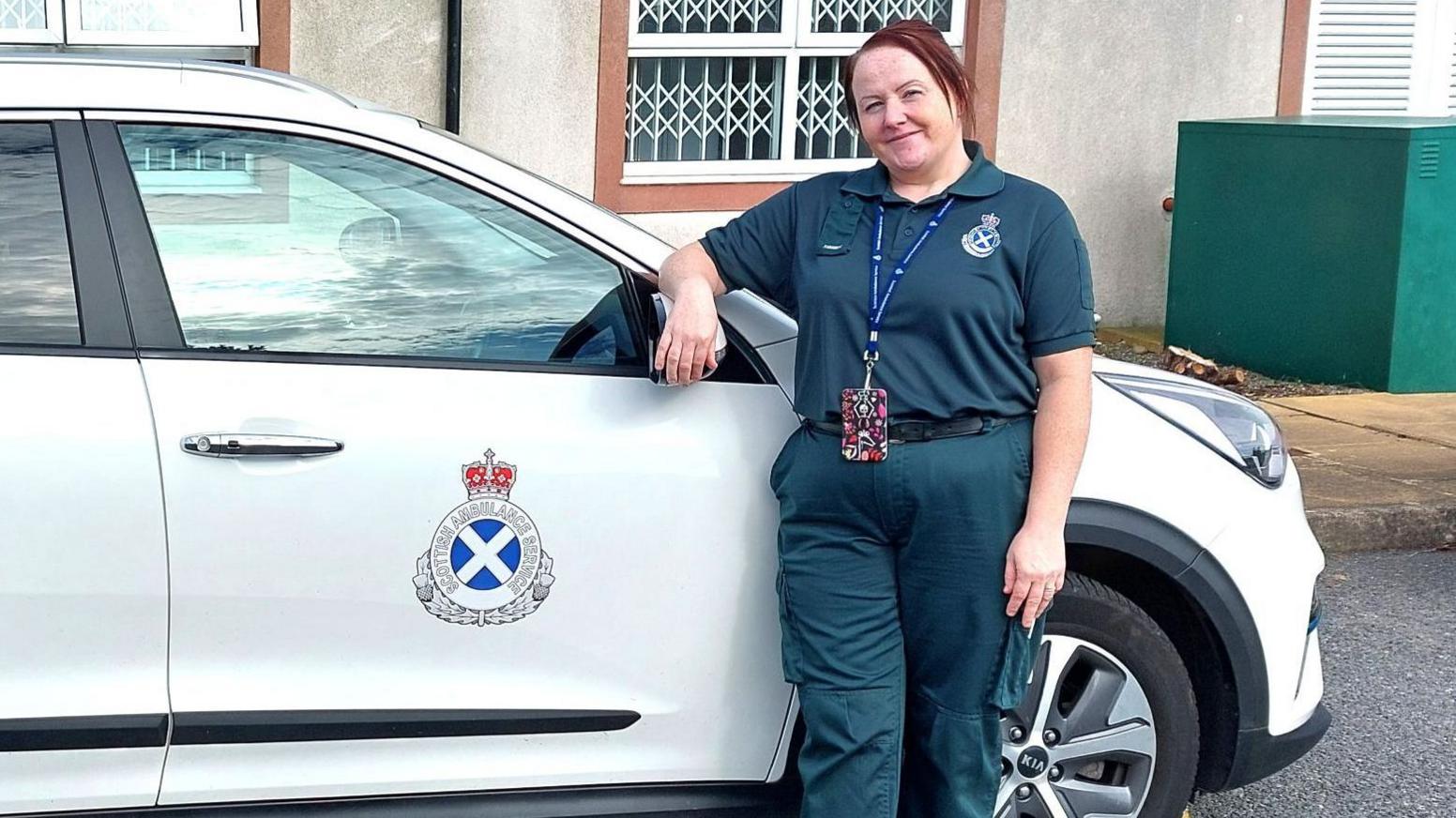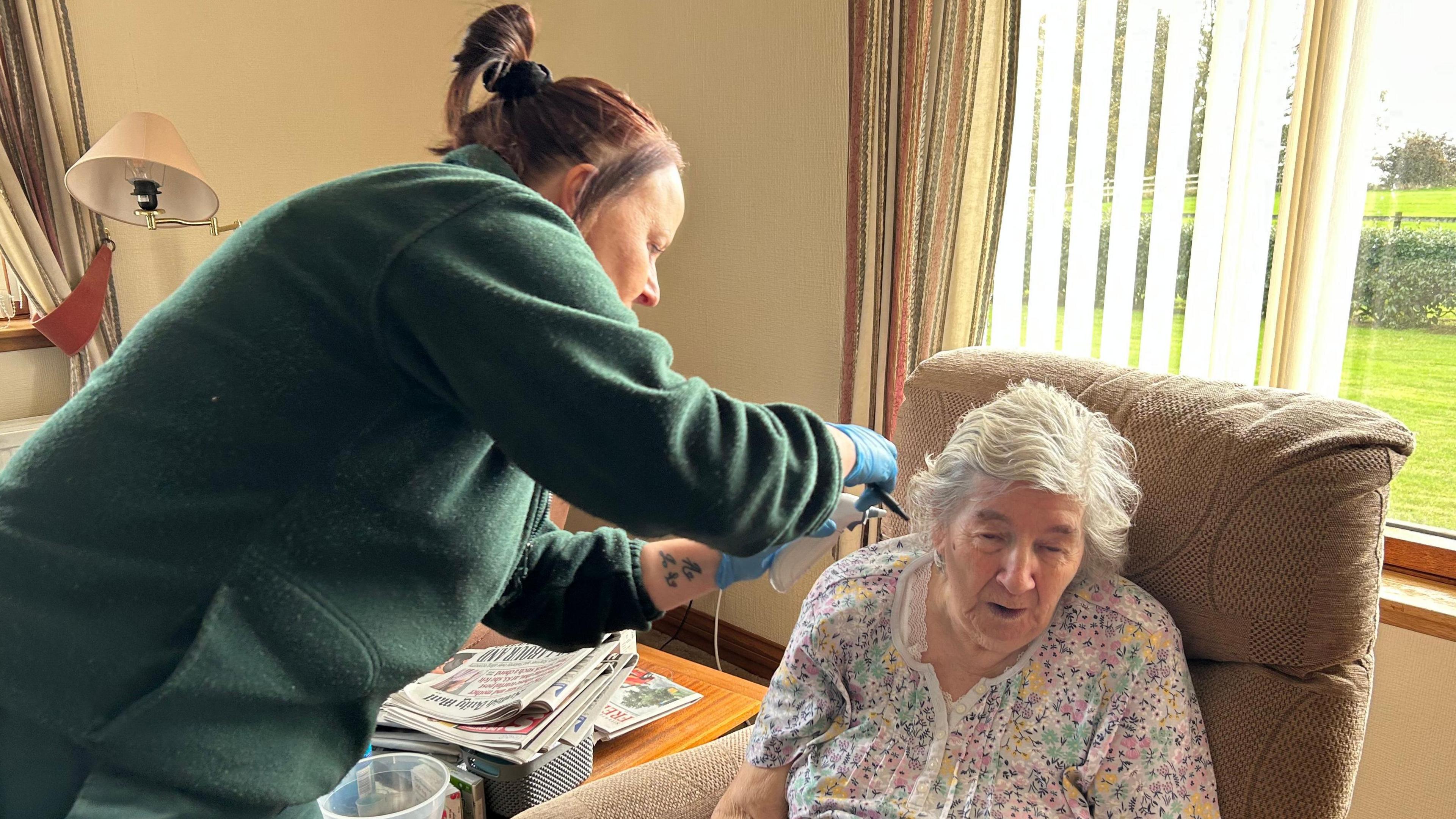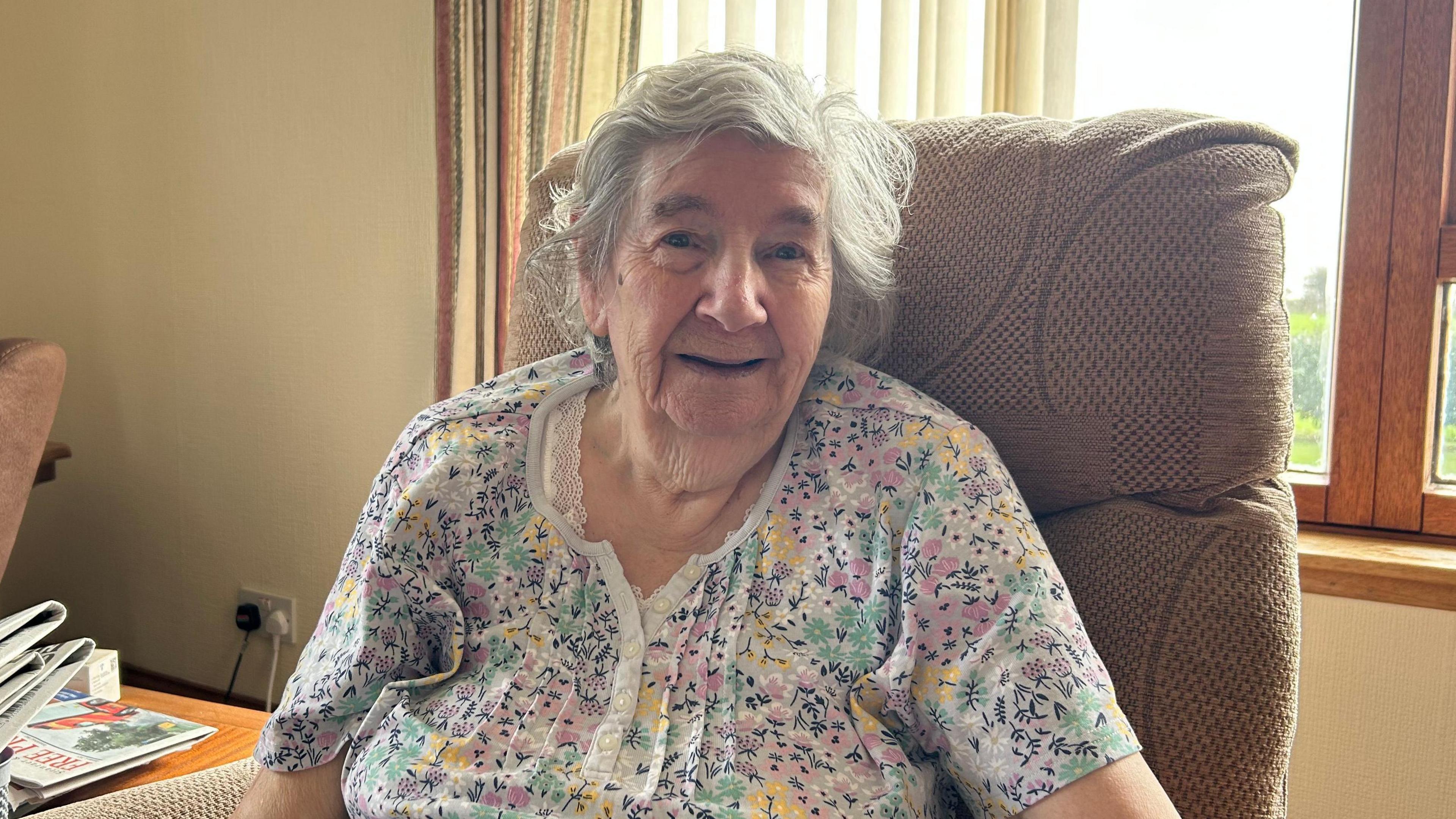Paramedic home visits cut workloads for busy GPs

Paramedic Kristin Milligan can cover 100 miles in a day on her home visits
- Published
Paramedics are helping free up GP time by taking on home visits normally carried out by family doctors.
In Dumfries and Galloway, a pilot by the Scottish Ambulance Service has cut GP home visits by 45%. The trial has now been extended.
Paramedics get a list of home calls in the morning, visit the patients, and make recommendations for treatment to GPs at the end of the day.
There are now hopes that the approach could be rolled out across other rural parts of Scotland.
"We're off to see Moira, she's 85", says Kristin Milligan, a paramedic based in Stranraer.
The patch she covers is enormous, and she can regularly travel 100 miles in a day.
"I can see ten people in a day," she says. "It's an extra pair of hands for a GP. People are getting assessed, treated, and referred on for further care as needed."
In 2024, paramedics in the area attended up to 400 home visits per month.
Inside a house in Stranraer, Kristin takes blood oxygen readings from her patient Moira and listens to her breathing.
Moira has a chest infection, an illness that Kristin will report back to the GPs that dispatched her.
Not all paramedics can prescribe medication, so it's important to report back Moira's symptoms so that treatment can be organised.

Paramedic Kristin examines patient Moira on one of her visits
Moira is appreciative of the visit, saying "they do all the examinations, take blood, and get things sorted with the GP for me."
Often it's people like Moira, who are less capable of getting out to a GP surgery that need help in this way.
"Some people can feel quite secluded at home. Maybe they're housebound so they can't get out to see the GP," says Kristin.
Another patient, James, has a similar infection. He explained that getting a GP appointment was difficult. He was told there was no slots available, and that there was no opportunity for a GP to come out.
"But they said they'd send a paramedic, so she came out and has seen to me," says James.
He knows it is not easy for GPs to visit but is happy with a paramedic coming to assess him, saying "as long as I get seen, that's the main thing".

Moira appreciates the paramedic home visit service because she does not find it easy to get out to her surgery
Requests for home visits come into the practice and are triaged by a GP.
Straightforward infections and similar problems are sent to the paramedic, while palliative and complex cases stay with the doctor.
Paramedics spend a week off their ambulance rota, and are attached to a GP surgery.
For GPs, it allows them to get on with seeing patients that come into the surgery.
"Paramedics provide all the care that's needed, but with a GP in the background directing it and guiding it as needed," says Dr Charlie Dunnett, a GP in Newton Stewart.
He says the scheme has changed the rhythm of the day.
"Historically, the GP would do house calls at the end of morning surgery, or perhaps in the afternoon," Dr Dunnett says.
"But the busier we get, the later those visits were getting done. Now people are seen much quicker in the day, and therefore care gets started sooner and hospital admissions can be arranged faster."
Dr Dunnett's patch stretches north by 15 miles and 20 miles to the south, meaning his working day could be spent largely outside the office if he had to attend multiple home visits in different areas.
The pilot began in Dumfries and Galloway in 2018 and has expanded to include 16 paramedics in the region, covering 19 GP practices.
Now there are hopes it could be replicated in other rural areas in Scotland.
"Some places perhaps paramedics would work better, perhaps other areas advanced nurses," Dr Dunnett says.
He added that earlier treatment meant fewer unnecessary A&E visits. The challenge will be to try and replicate the scheme's success in another area.